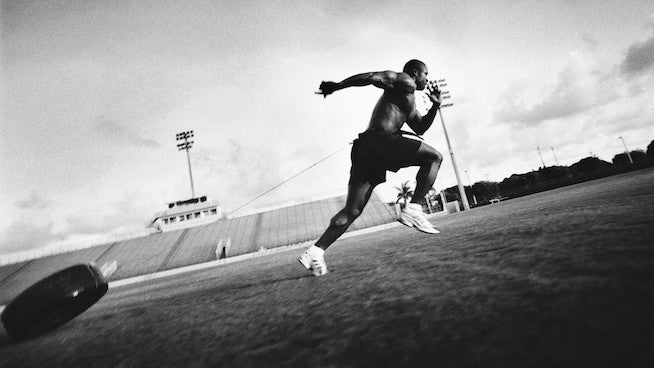Your Cart is Empty

Six Pack
The six keys to becoming a better conditioned athlete.
By Mike Mejia CSCS
Although previously reserved for collegiate and professional level competitors, sports specific training is fast becoming the rule for today's serious young athlete. In fact, theses days it's not uncommon to see kids as young as 10 years old enrolled in programs specifically aimed at increasing speed, strength and power. While there's nothing wrong with athletes wanting to improve upon these key athletic attributes, I find that often times it's done at the expense of developing a sound overall conditioning base. The unfortunate reality is that by placing too much emphasis on performance related outcomes rather than training to improve overall athleticism, many young athletes and their coaches are failing to see the forest through the trees. What good is improved agility, or a better vertical jump if you lack the mobility and core strength necessary to avoid injury. After all, if you're hurt- you can't play, right?
That's why I've outlined six key components to becoming a better conditioned athlete. It doesn't matter if your game is lacrosse, soccer, tennis, or swimming, these universal laws of physical preparation will help take your game to the next level. Not only will you become stronger, with improved energy levels and an increased resistance to injury, but you'll be pleasantly surprised with the noticeable boost in performance. In part one of this two-part article, I'll examine the importance of core training, mobility work and increasing systemic strength.
Finally, since it's such an integral part of developing overall systemic strength, core training should be given priority over other aspects of your conditioning program. Instead of blowing through a few exercises at the end of your workout, try hitting your core first when your energy levels are at their highest. About the only exception to this would be prior to a heavy squat, or deadlift workout. You wouldn't want to fatigue your core prior to attempting total body exercises like these, as the stability it affords will be key to your ability to execute these lifts with proper form.
Not that static stretching should be avoided entirely. It's a great tool to use at the end of a tough workout to help relax and restore your muscles to their resting length. Just be sure you limit them to your post workout routine. That same relaxation you seek at the end your workout can spell doom when you're trying to get your muscles fired up to train. Mobility drills would once again be the preferred choice here due to the stimulatory effect they have on the central nervous system.
It's also worth mentioning that the kind of strength I'm referring to here can't be built on machines. Things like leg extensions, leg curls and the ever-popular leg press (which enables just about anyone to use large quantities of weight) have very little transfer to actual running ability. The guided path they offer and isolated fashion in which they engage the muscles simply can't compare to drills like squats, lunges and step-ups. Of course, it should be mentioned that any lower body, or core strengthening exercises that you do should first be mastered with just your body weight before moving on to using any form of external resistance. In fact, I start all of my athletes on a strict regimen of body weight training before progressing them to things like medicine balls, resistance bands or free weights. This typically includes lots of lunges, squats (usually of the one-legged variety), push-ups, pull-ups and of course, a heavy dose of core strengthening.
There you have it- three "can't miss" tips for improving your overall athleticism. Be on the lookout for part two where I'll go over the need for training multi-directional speed, how to fuel your body properly and the role that "pre-habilitation" exercises play in keeping you off the disabled list. Until then, start implementing this advice right away and before long, you'll be the best conditioned athlete on your team!
EVANS PHILIP
June 03, 2024
Amazing Love Spell To Get Back With your Partner and Fix Your Broken Relationship WHATSAPP+2349161779461
My wife broke up with me 3 months ago, and forced me to sign the divorce papers, and I was completely heartbroken. And I could not get back into any shape emotionally. I Thank God for this astonishing and brilliant spell caster that came to my rescue. Wow! This spell caster has helped me so much. Dr Jakuta guaranteed me an urgent 24hrs spell casting, of which I accepted it. Shockingly! this month my wife called me back with lots of apologies after 48hrs which he assured me, and he did everything possible to withdraw the divorce papers which was previously ongoing with the power of this miracle working spell caster. Some people testified that he brought their Ex lover back, some testified that he restores womb, cure cancer, herpes simplex virus, hiv and other sickness, Thank you so so so much Lord for your powerful spells. expressions are not sufficient to say thank you. Email doctorjakutaspellcaster24@gmail. com. You can also WhatsApp him on +2349161779461